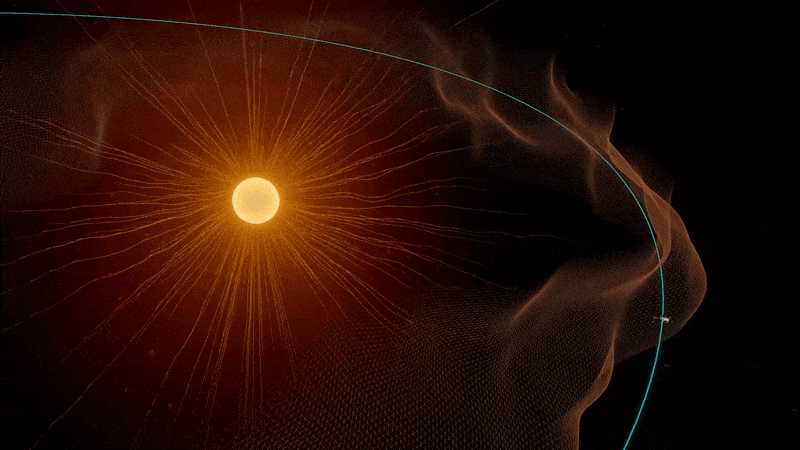The Hidden Corona: Sun’s Outer Atmosphere

The Sun’s corona is visible during a total solar eclipse. The wisps of plasma are typically hidden by the brightness of the Sun’s surface.
NCAR/HAO
The uppermost portion of the Sun's atmosphere is called the corona. It extends many thousands of kilometers above the visible surface of the Sun, gradually transforming into the solar wind that flows outward through our solar system. The solar wind is really just an extension of the Sun's atmosphere that engulfs all of the planets. Earth actually orbits within the atmosphere of a star!
We Can’t Usually See the Corona
We normally cannot see the corona. The surface of the Sun is far too bright to allow a glimpse of the much fainter solar atmosphere. During a total solar eclipse, the corona briefly comes into view as the Moon blocks out the light from the solar surface.
The corona is wispy, white streamers of plasma (charged gas) that radiate out from the surface of the Sun. It constantly changes shape and size.
Why is the Corona So Much Hotter Than the Surface of the Sun?
The corona is much hotter than the Sun's surface, about 1 million °C compared to 5,500 °C (9,940 °F). Researchers aren’t sure exactly why the corona is so hot. It’s possible that millions of nanoflares, which are tiny explosions happening at the solar surface, are creating the energy that heats up the corona. Another idea is that solar tornadoes, which are giant vertical spirals of plasma that interact with the Sun’s magnetic field, could also lead to high coronal temperatures. There is still much to be learned about the corona!
Studying the Corona
Because of the high temperatures in the corona, particles are moving at a high enough speed to escape the Sun’s gravity and travel through space as solar wind. When there are solar flares from the corona, larger than normal amounts of energy interact with our atmosphere, causing disruptions to power grids and satellite communications. Astronomers study the corona to better understand how solar storms impact Earth. They use a special instrument called a coronagraph to view the corona and watch for solar flares. Space missions, such as NASA’s Parker Solar Probe, help us learn more about the Sun and the hidden corona.

In December 2021, the Parker Solar Probe became the first spacecraft to encounter and sample the corona, at a distance of 8.2 million miles from the surface of the Sun. Inside the corona, plasma is connected to the Sun. Beyond it, the Sun’s magnetic fields and gravity are too weak to contain the plasma and it becomes the solar wind.
NASA/Johns Hopkins